Kitchens often become cluttered with items that serve no real purpose, taking up valuable space. Professional organizers have pinpointed 17 specific kitchen items that you should consider discarding to create a more efficient and functional kitchen. These items not only take up space but can also hinder your culinary creativity. By eliminating them, you can make room for things that truly matter and enhance your kitchen’s functionality.
Chipped Mugs
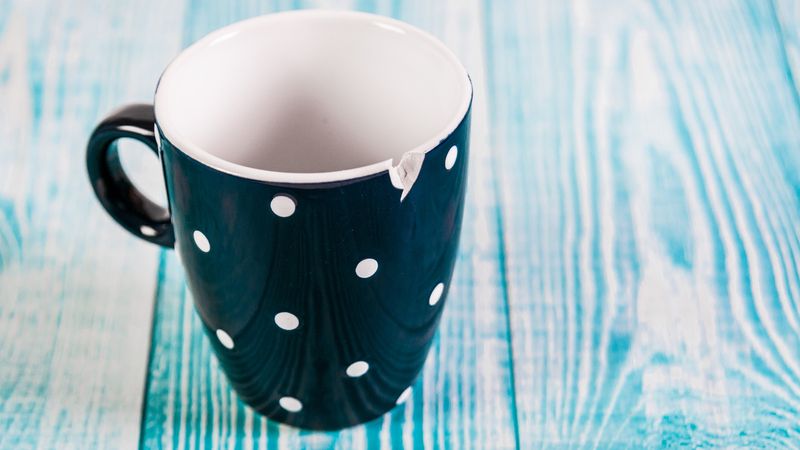
Tucked away in the back of your cupboard, chipped mugs tend to accumulate over time. Their sentimental value might be high, but their usefulness is questionable.
Chipped edges can harbor bacteria and are not safe for daily use. Letting them go can make space for pristine mugs that enhance your coffee drinking experience.
Consider donating them to art projects or simply dispose of them responsibly. Clearing these out not only tidies your shelves but also ensures you’re serving beverages in style and safety.
Expired Spices
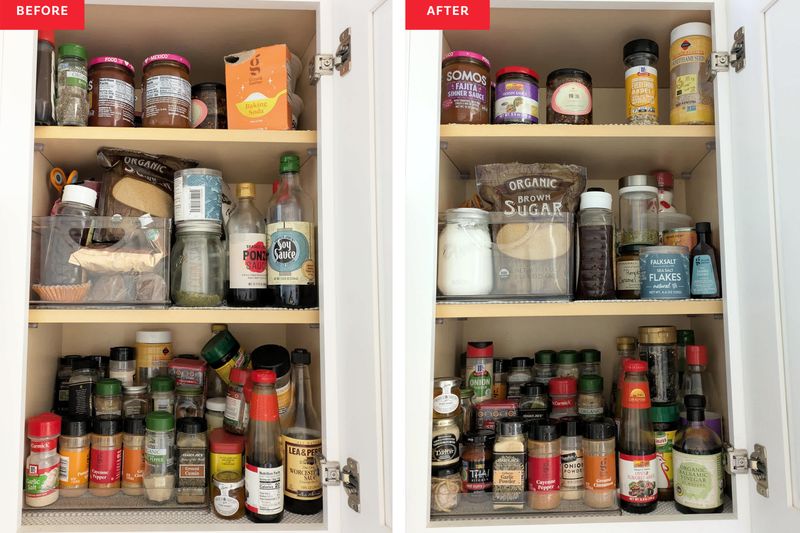
Lurking in the shadows of your pantry, expired spices are a common find during kitchen cleanouts. While they may not pose a direct health risk, their flavor diminishes over time, impacting the taste of your dishes.
Keep your culinary creations vibrant by replacing these outdated seasonings with fresh, aromatic alternatives. A well-organized spice rack not only looks inviting but ensures that your meals are bursting with flavor.
Check expiration dates regularly to maintain a fresh and flavorful spice collection.
Non-Stick Pans with Scratches
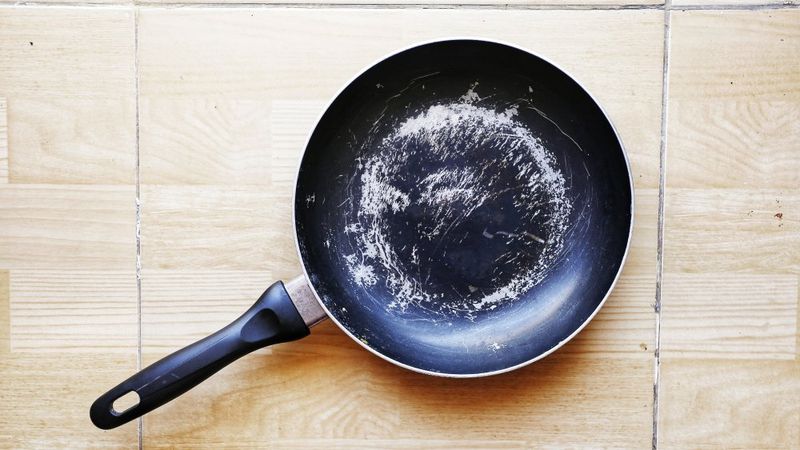
Once beloved for their easy cooking and cleaning, scratched non-stick pans can become a potential hazard in the kitchen. Scratched surfaces may release harmful chemicals into your food.
For health-conscious cooks, it’s essential to replace these pans with newer models. This change not only protects your health but also enhances your cooking experience.
Newer non-stick technologies offer durability and superior non-stick qualities, making your time in the kitchen more enjoyable.
Duplicate Utensils
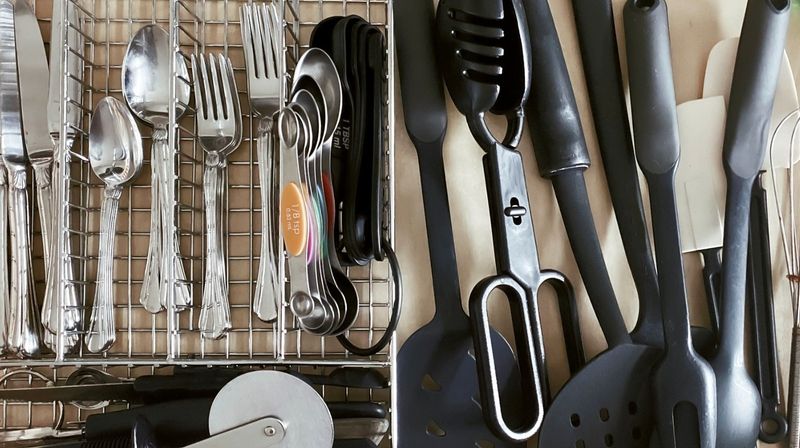
Every kitchen seems to attract duplicate utensils, leading to cluttered drawers and frustration. While having a backup is sometimes handy, excessive duplicates can hinder your kitchen’s efficiency.
Streamlining your collection by donating or recycling extra items can simplify your cooking process. A neat and organized utensil drawer can be a joy to use.
Focus on quality over quantity, ensuring that each tool serves a unique purpose in your kitchen endeavors.
Warped Plastic Containers
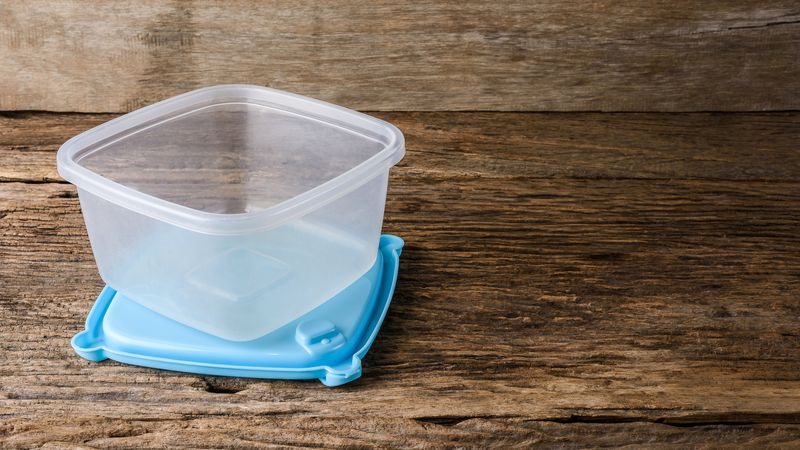
Mismatched and warped plastic containers often find a way into our homes, creating chaos in kitchen cabinets. Their misshapen forms make stacking difficult, leading to frustration.
Instead, opt for durable glass containers that provide both aesthetic and functional benefits. These containers stack neatly, making organization a breeze.
Embrace the shift to more sustainable and visually appealing storage solutions that align with a modern kitchen lifestyle.
Old Cookbooks
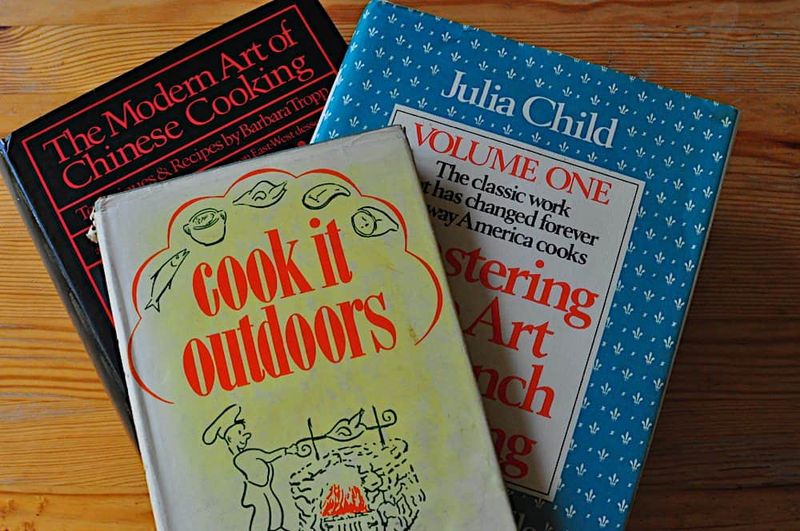
In the age of digital recipes, old cookbooks often gather dust rather than inspire meals. Their bulkiness can crowd your kitchen shelves, leaving little room for modern touches.
Consider transitioning to digital formats, which save space and offer endless culinary possibilities at your fingertips. This shift not only frees up valuable space but also keeps your kitchen current.
Donate or recycle these relics, and embrace a more streamlined cooking experience.
Unused Appliances
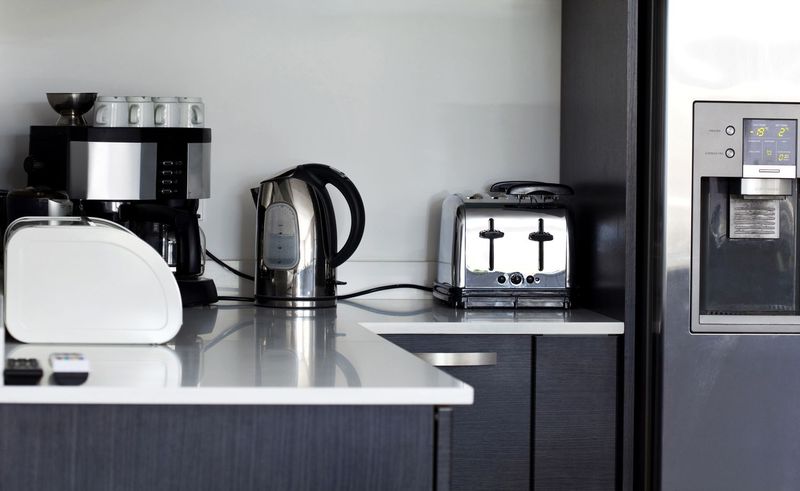
Unused appliances often sit idle, taking up precious counter space with no return on investment. Whether it’s a bread maker or an old juicer, their presence can crowd your kitchen and hinder efficiency.
By parting with these neglected gadgets, you open up space for tools you use daily. A streamlined counter can transform your kitchen into a more workable space.
Selling or donating these items can also bring joy to someone who will truly appreciate them.
Old Dish Towels
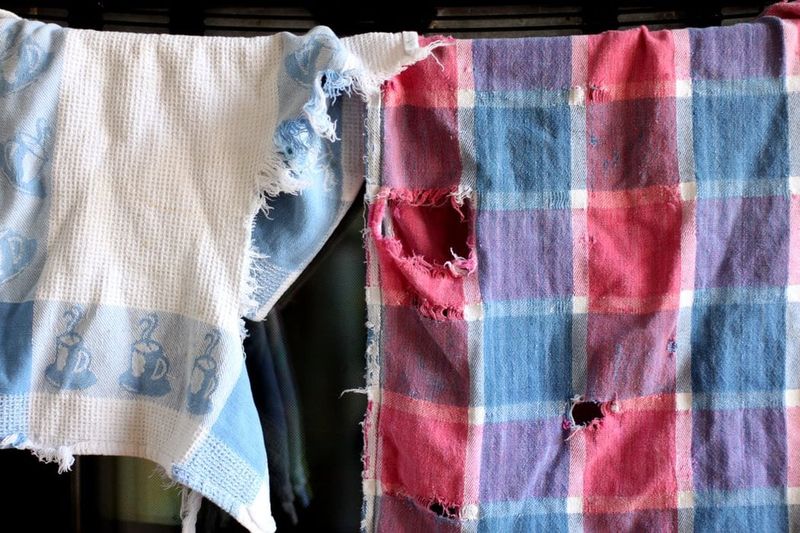
Dish towels endure a lot of wear and tear, often resulting in a tired appearance. Stains and holes are common, and they may no longer be as absorbent.
Replace these with fresh, vibrant towels that add a pop of color to your kitchen. New towels not only look better but also perform their drying duties more efficiently.
Regularly updating your dish towel collection can enhance your kitchen’s aesthetic and functionality.
Cracked Plates

Cracked plates are a common issue in many households, posing both a safety hazard and an aesthetic blight. Eating off damaged dishes can risk injury and detract from the dining experience.
It’s wise to replace these with unblemished, attractive alternatives. New plates can invigorate your table setting and ensure meals are served with style.
By discarding damaged items, you enhance both the safety and beauty of your dining collection.
Expired Canned Goods
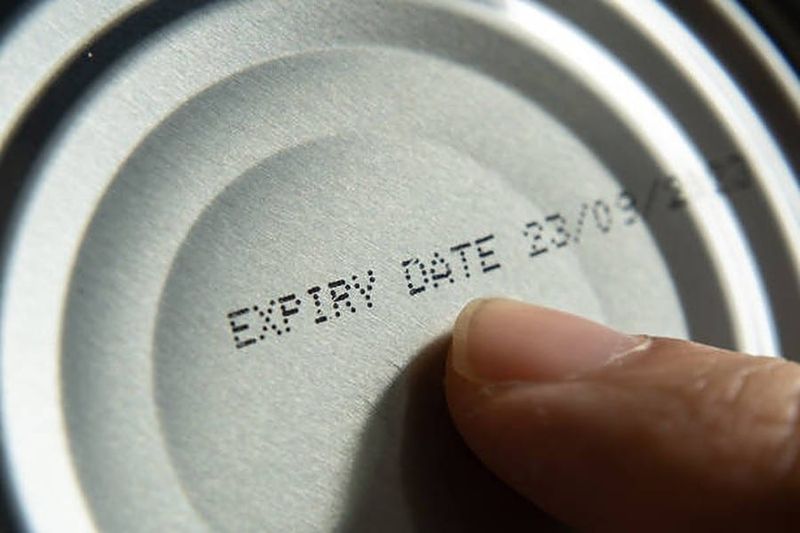
Pantries are often home to expired canned goods, long forgotten yet still occupying space. These items can make it hard to spot fresh ingredients, leading to food waste.
Regularly checking expiration dates and discarding old cans can create room for new, healthy options. A well-organized pantry simplifies meal prep and promotes a fresher diet.
This practice ensures that your pantry is a hub of nutrition rather than a relic of overlooked items.
Broken Gadgets
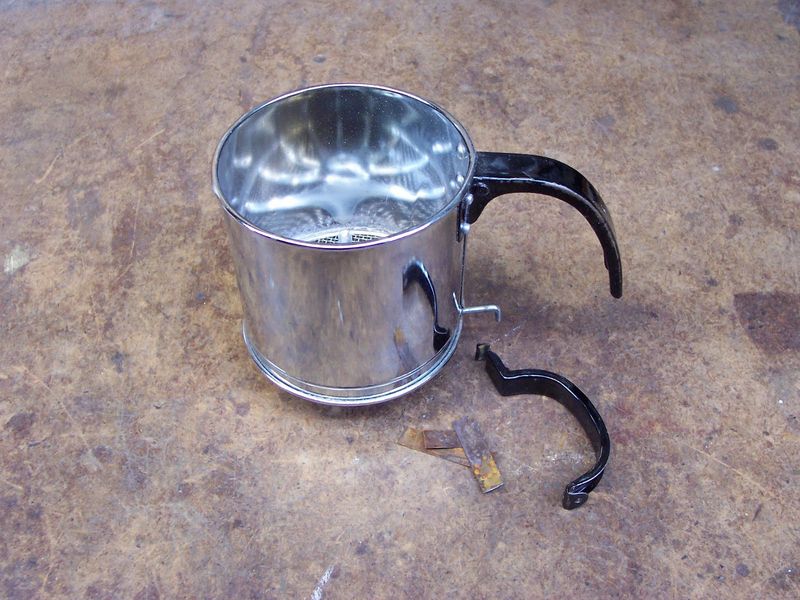
Kitchen gadgets are wonderful helpers until they break and lose their purpose. Holding onto broken tools can clutter drawers and hinder accessibility.
Clearing out these items can make room for functional alternatives that truly enhance your cooking experience. Prioritize gadgets that are versatile and reliable.
This decluttering effort can lead to a more organized and efficient kitchen space.
Rusty Baking Sheets
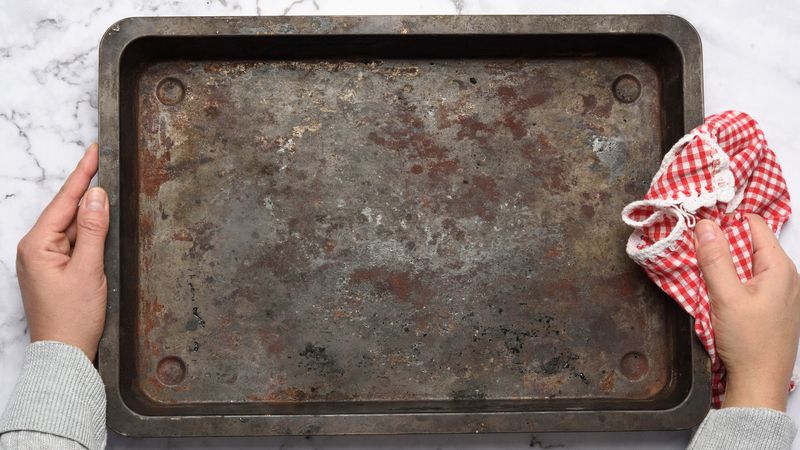
Baking sheets often face the wrath of rust over time, becoming unsightly and unhealthy for cooking. Rust can transfer to food, posing health risks.
Replacing them with new, easy-to-clean sheets ensures both safety and convenience in your baking adventures. Modern options offer non-stick surfaces and durability.
This upgrade can revitalize your baking routine and ensure delicious outcomes every time.
Excessive Glass Jars
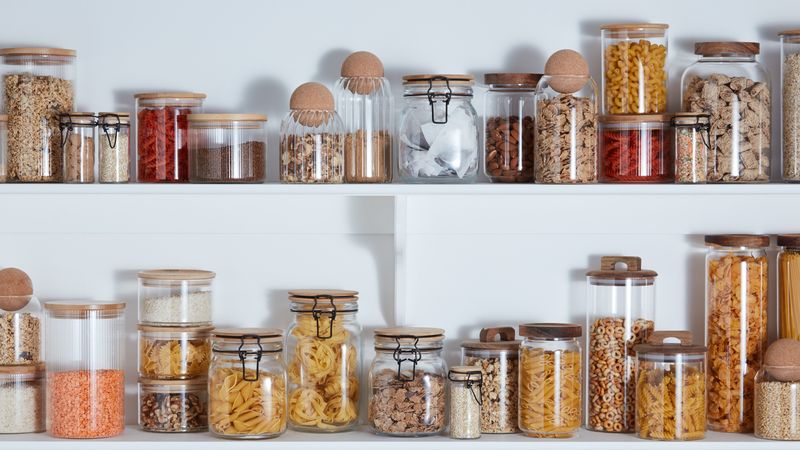
Glass jars are versatile but can accumulate quickly, causing storage issues. Too many jars can clutter shelves and make organization difficult.
By keeping only what you use regularly, you can maintain a tidy and efficient storage area. Opt for uniform jars for a cohesive look.
A well-organized pantry with just the right amount of jars can be both functional and visually pleasing.
Old Water Bottles
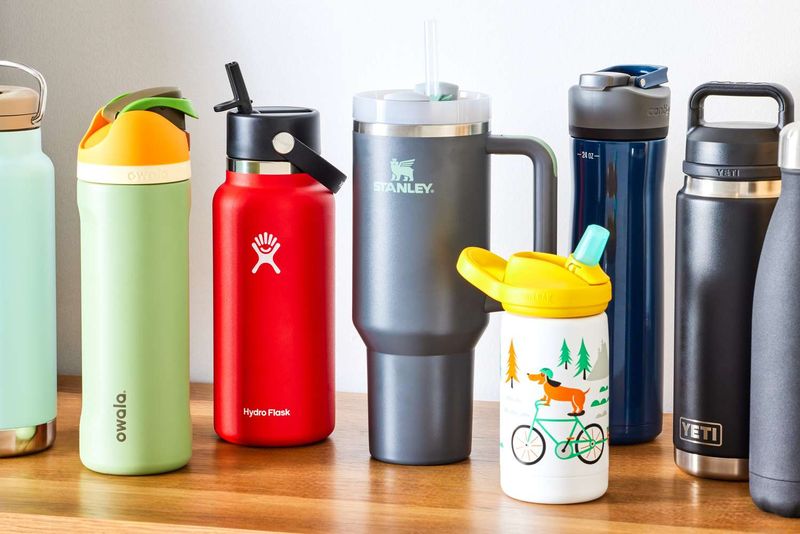
Water bottles have a way of multiplying, especially those from events or as gifts. Old bottles can clutter cabinets and lose their charm over time.
Transitioning to a few high-quality, reusable bottles can save space and reduce waste. Choose designs that are both functional and stylish.
This shift not only declutters but also promotes sustainability in your daily hydration habits.
Stained Cutting Boards
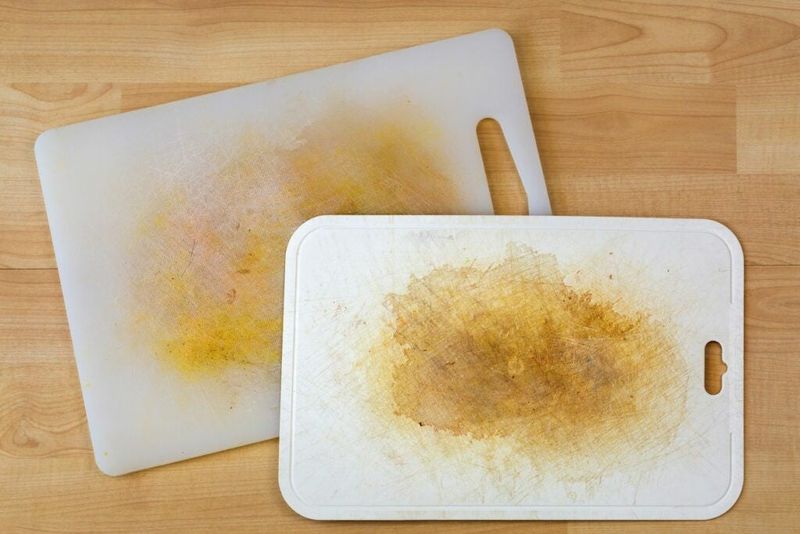
Over time, cutting boards can acquire stains and harbor bacteria, becoming less hygienic. These marks can also affect food preparation aesthetics.
Replacing old boards with high-quality wooden or bamboo alternatives ensures cleanliness and visual appeal. These materials are not only durable but also gentle on knife edges.
A clean, attractive cutting board is essential for both food safety and enjoyment.
Unused Serving Dishes
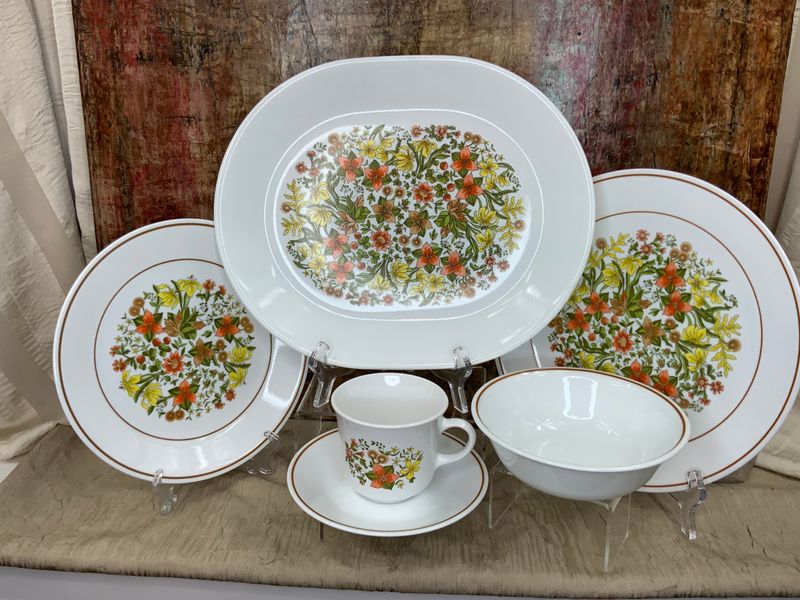
Serving dishes, especially those passed down from relatives, can pile up in cabinets, rarely seeing the light of day. Their ornate designs might not suit your current style.
Letting go of unused items can free up space for everyday essentials. Opt for versatile dishes that cater to various occasions.
This change ensures that your kitchen remains functional and aligned with your personal taste.
Old Coffee Makers
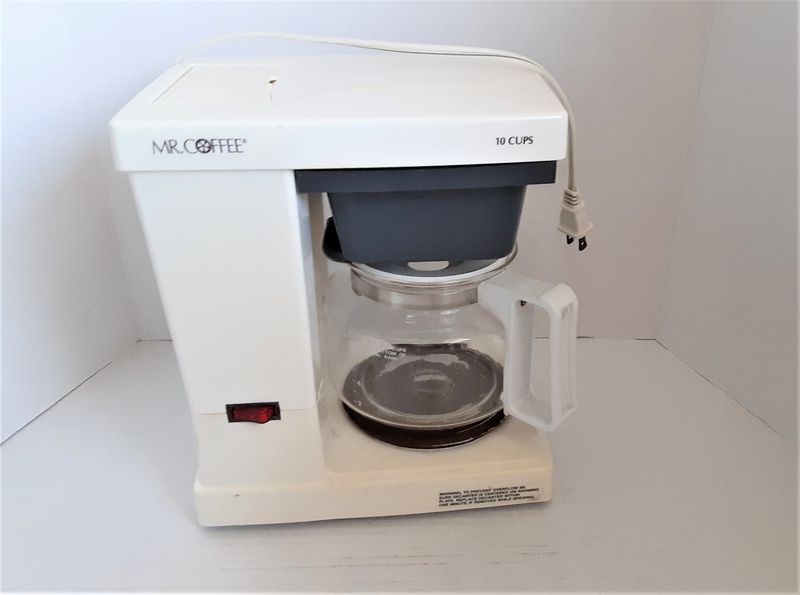
Coffee makers are a staple in many kitchens, but older models can become inefficient and bulky. They often lack the features of newer machines.
Upgrading to a modern coffee maker can enhance both your morning routine and kitchen aesthetic. Look for compact designs with advanced brewing options.
This update not only improves convenience but also adds a sleek touch to your countertop.
Leave a comment